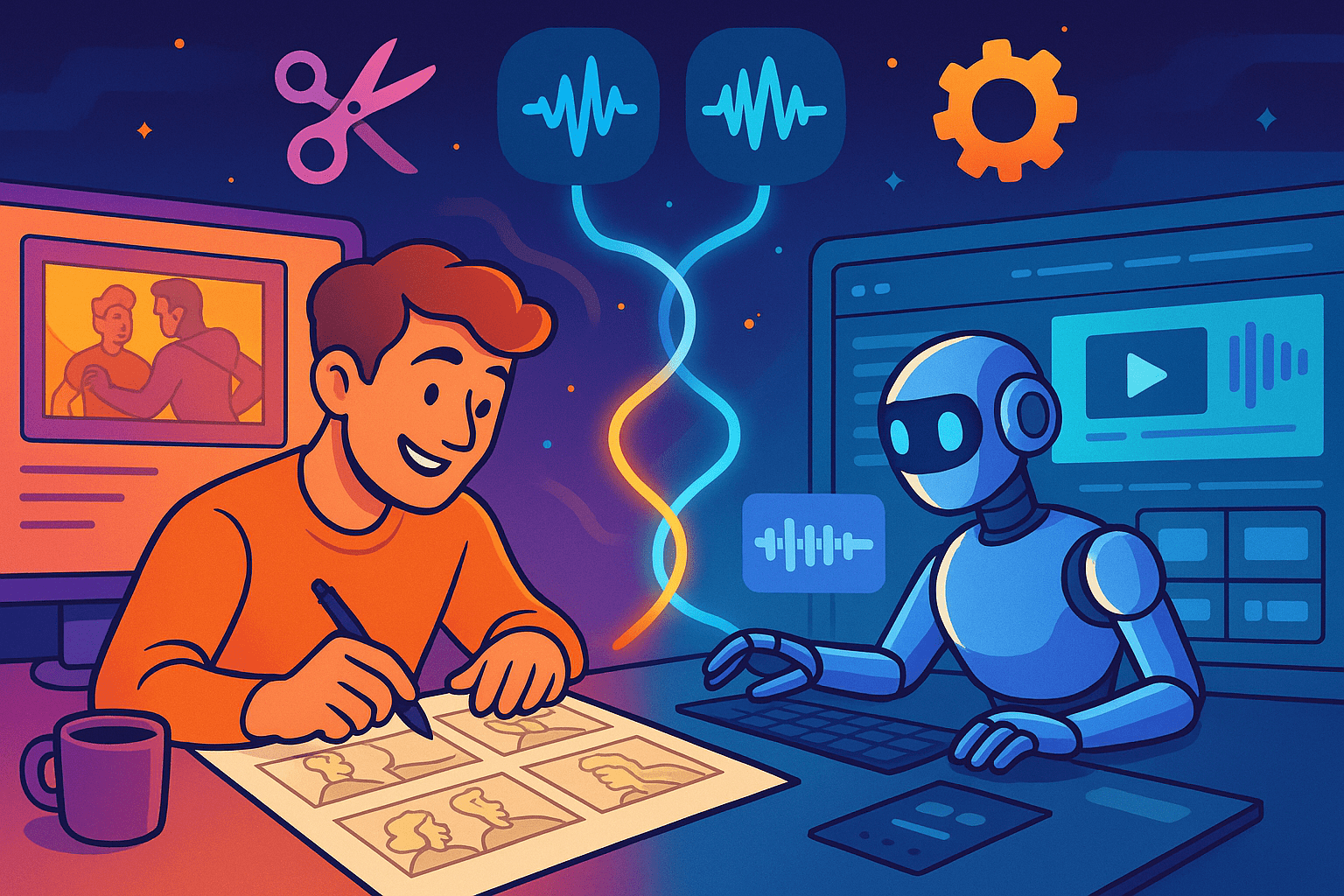
AI-powered video ads are rapidly transforming the marketing landscape. From automating tedious editing tasks to delivering hyper-personalized content, AI promises to save creators time, reduce costs, and boost ROI. But with all the excitement and hype, many creators are left wondering:
What can AI really do? Where does human creativity fit in? How do you leverage AI without losing your unique voice or brand integrity?
In 2025, the answer is clear: mastering AI in video advertising is about mastering balance—combining the efficiency of AI with the irreplaceable value of human creativity.
Let’s dive deeper into what creators need to know to navigate this evolving space confidently and effectively.
1. AI Automates, But Doesn’t Replace Creativity
AI excels at automating repetitive, time-consuming tasks like cutting footage, resizing videos for multiple platforms, color correction, and adding subtitles. This frees creators from grunt work, letting them focus on what truly matters: storytelling and emotional connection.
However, AI-generated drafts often lack the nuance, authenticity, and brand voice that human creators bring. AI can suggest edits or generate visuals, but it can’t intuitively understand your brand’s mission, your audience’s emotional needs, or cultural subtleties.
Action Steps:
- Use AI tools to handle repetitive tasks: automated clip trimming, format conversion, background music suggestions, and rough cuts.
- Invest your creative energy in crafting compelling narratives, scripting authentic messages, and refining the final edits.
- Always review AI-generated content critically—add your unique style, tone, and emotional resonance.
Example:
A fashion brand might use AI to quickly generate product teaser videos across different social media aspect ratios, but the campaign’s impact still hinges on human-curated storytelling and brand consistency.
2. Know Your AI Tools’ Strengths and Limits
Not all AI platforms are created equal. Some specialize in video editing (like VEO), others excel in voice generation or audio enhancements (like Suno AI), and some focus on scriptwriting or caption generation. No single tool can do it all perfectly.
Understanding the strengths and limitations of each platform helps you build a more efficient and effective workflow.
Action Steps:
- Experiment with different AI tools to see what fits your workflow and content needs best.
- Combine tools to cover gaps—for example, use one AI for editing, another for voiceover, and a third for automated subtitles.
- Stay realistic: AI-generated voiceovers may sound synthetic; use human voice talent for high-impact campaigns.
- Monitor AI outputs closely to catch glitches or errors before publishing.
Pro Tip:
Many AI platforms offer integrations or APIs—consider creating a custom workflow that stitches several tools together for maximum efficiency.
3. Ethical Use Matters More Than Ever
AI’s ability to generate content rapidly can lead to ethical pitfalls—copyright infringement, biased or inappropriate outputs, and misinformation.
Creators must be vigilant to ensure their AI-generated ads are responsible and legally compliant.
Action Steps:
- Always verify the accuracy and appropriateness of AI-generated content before publishing.
- Ensure you have the rights to all assets used, including AI-generated imagery, music, or footage.
- Disclose AI usage transparently when relevant, especially if it impacts authenticity or consumer trust.
- Avoid relying on AI-generated stereotypes or biased data sets—diversity and inclusivity require human oversight.
Insight:
Brands that misuse AI risk backlash or legal consequences, which can damage reputation more than cost savings.
4. Keep Learning and Adapting
AI technology advances at a breakneck pace. Features that are cutting-edge today can become outdated quickly. To stay competitive, creators must prioritize continuous learning.
Action Steps:
- Follow AI and marketing news from trusted sources regularly (e.g., TechCrunch AI section, Marketing AI Institute).
- Join creator communities, forums, and social media groups dedicated to AI tools and video marketing trends.
- Experiment regularly with new tools and features to discover how they fit into your workflow.
- Attend webinars, workshops, or conferences focused on AI-driven content creation.
Pro Tip:
Set aside a small weekly “innovation hour” to explore AI tools and test new techniques without the pressure of client deadlines.
5. Use AI to Scale, Not Cut Corners
AI is a powerful multiplier, allowing creators to scale content output efficiently. But it is not a shortcut to lower-quality work.
Consumers today demand authentic, high-quality video ads that resonate emotionally and reflect brand values.
Action Steps:
- Use AI to increase the volume of content—think multiple ad versions, tailored cuts for different audiences, or rapid A/B testing.
- Don’t sacrifice quality for quantity; invest time in strategic planning and creative direction.
- Use AI data insights to inform creative decisions, like which video lengths, formats, or messages perform best.
- Blend human creativity and AI analytics to optimize campaigns dynamically.
Conclusion: AI + Human Creativity = The Future of Video Ads
The future of video advertising isn’t human vs. AI—it’s human + AI.
Creators who harness AI to amplify their creative vision, rather than replace it, will lead the industry in 2025 and beyond. Efficiency gains free up time for deeper storytelling, emotional connection, and strategic innovation.
Your Move: Try integrating one AI tool into your next video project—but keep your unique creative voice at the center. Use AI as a powerful assistant, not the boss.


